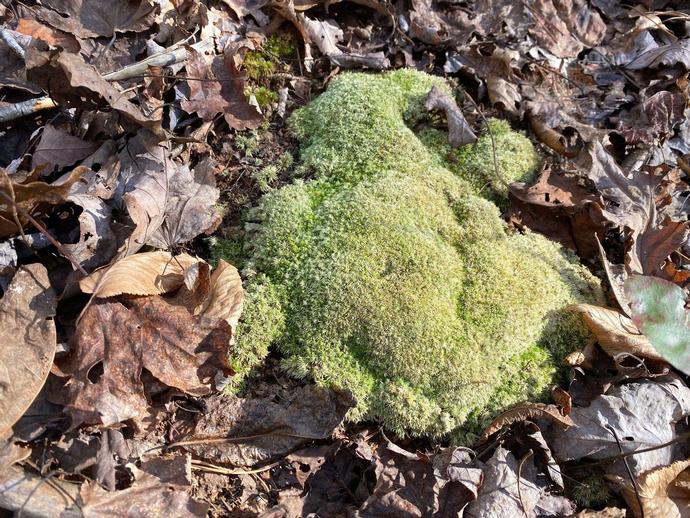March 12, 2021
Ben here with the Friday edition of #BenInNature presented by our friends at Carter Bank & Trust!
Today, we'll be examining the most fascinating, thrilling lifeform we've looked at yet: moss!
All right, moss isn't exactly the most exciting thing in the world, but it's a pretty interesting plant! Or rather, division of plants; mosses belong to the division Bryophyta and the more than 12,000 different species of moss are collectively referred to as "bryophytes." Mosses are very small, non-vascular flowerless plants that grow in dense clumps, and typically their leaves are just one cell thick! Unlike most plants, moss does not draw water up through its roots and send it to the leaves; instead, the leaves absorb water and there are no roots at all.
There are a number of myths about moss. One you may have heard is that if you want to grow moss in a specific area, you can take a big clump of moss, throw it in your blender with some buttermilk, and then use a brush to paint the concoction on the surfaces where you would like moss to grow. This method sort of works, but only if you live in a humid environment. If you want to grow moss in a specific place, just break up a clump of moss, place the pieces where you'd like them to grow, and keep them damp. Moss doesn't grow very quickly, but the clumps should eventually take hold and spread.
Another myth is that moss kills lawns. This one simply isn't true; moss grows so slowly that it has a hard time outcompeting other plants. If you have moss in your lawn or garden, it's more likely to mean that the area is too damp for anything else to grow there and moss has taken hold instead.
Here's one last one: is it true that moss only grows on the north side of trees? In truth, moss doesn't particularly care what direction it's growing in; it just grows where there's moisture. The north side of a tree generally gets less light and therefore contains more moisture (unless you're in the southern hemisphere, in which case the south side of the tree is the side that gets less light). Of course, if you're lost in a particularly humid environment, the moss will just grow all over the place, so don't forget to pack a compass!
ABOUT #BenInNature
Social distancing can be difficult, but it presents a great opportunity to become reacquainted with nature. In this series of posts, Administrator of Science Ben Williams ventures outdoors to record a snapshot of the unique sights that can be found in the natural world. New updates are posted Monday - Friday, with previous posts highlighted on the weekends. This series of posts is made possible thanks to the support of VMNH Corporate Partner Carter Bank & Trust (www.cbtcares.com)
NATURE PHOTO IDENTIFICATIONS
If you discover something in nature that you would like help identifying, be sure to message us right here on Facebook with a picture (please include location and date of picture) and we'll have our experts help you identify it!

 Hours & Admissions
Hours & Admissions Directions
Directions

